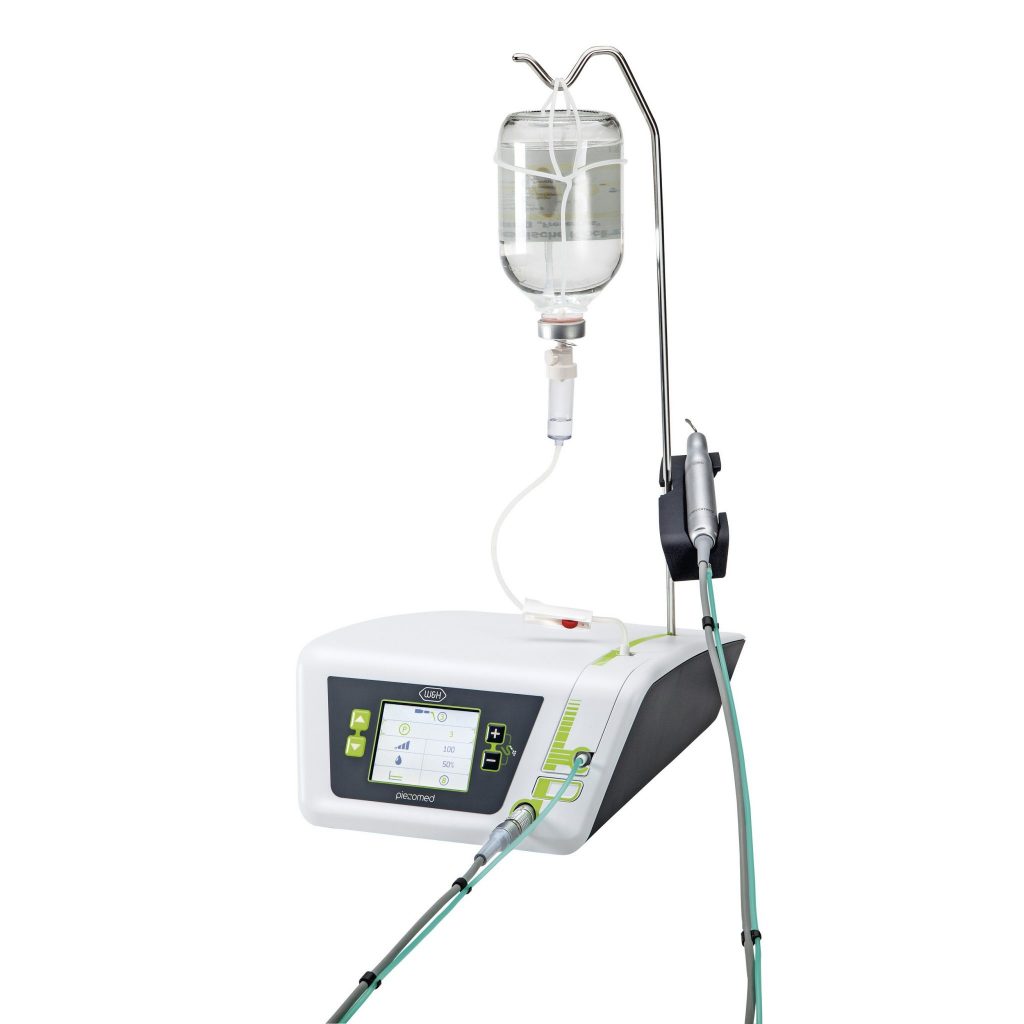Achieving success with optimal precision
Featured Products Promotional FeaturesPosted by: Dental Design 28th August 2022

It was commonplace in previous centuries to simply remove the tooth from a patient’s mouth, with little regard to the complications that could occur. Nowadays, saving the tooth is the clinician’s first priority. Patients who have significant decay may be surprised to discover that the tooth does not always have to be removed. However, there are still situations where an extraction is deemed clinically necessary.
The most common indications for tooth extraction are caries and periodontitis.[i] While the procedure is relatively straightforward, there are issues that can occur that put the patient and the success of their treatment at risk. There are instances where a tooth cannot be removed in an upright position, which requires the clinician to individualise their approach to gain the most optimum clinical outcomes.
Complications
Wisdom teeth are generally considered to be the most common teeth extracted.[ii] Many individuals live life with minimal discomfort from their wisdom teeth. However, if they become impacted due to a lack of space in the mouth, patients often experience intense pain, with their neighbouring teeth at a higher risk of further complications. Wisdom teeth that are only partially erupted present as complex cases for clinicians, often requiring surgery to the soft and/or hard tissues surrounding the site. Similarly, teeth with larger and/or longer roots can require additional force during extraction. As you well know, this increases the risk of a tooth fracture and iatrogenic fracture of the mandibular.[iii] While rare, mandibular fractures can occur both intra-operatively and postoperatively, with a higher incidence in older age groups.[iv]
Dry socket has been shown to occur in around 5-10% of all tooth extractions,[v] potentially resulting in a throbbing pain, halitosis and trismus.[vi] Interestingly, the risks factors associated with dry socket include oral contraceptives (due to the presence of oestrogen),[vii] smoking, poor oral health and trauma from difficult extractions.[viii] [ix]
During and post-surgery
Even for the most experienced of clinicians, reducing the risk of complications both during and after the procedure can be a challenge.
Once treatment has taken place, patients are advised to follow a strict regime to ensure optimal healing of the site, such as implementing a soft diet, no smoking or consumption of alcohol, warm saline mouth rinses and avoidance of strenuous activity.[x] Patient compliance is a vital aspect of any dental treatment. Failure to comply can result in worsening oral health and a higher risk of encountering post-operative complications.[xi] For instance, a study demonstrated that patients who smoked reported more pain post-extraction than those who did not smoke.[xii] The incidence of dry socket was similarly more prevalent in smokers than non-smokers.[xiii]
However, as is customary pre-surgery, ensuring the patient fully understands what is involved, as well as their role in the aftermath, will ensure they recognise the importance of their compliance. Despite the relatively short healing period, some patients may struggle having to limit themselves in their day-to-day life, or adhering to strict post-operative recommendations. Reiterating their role during and after the procedure, whether via a telephone call or an email,[xiv] could help prompt them to stay on track.
 Choose your tools wisely
Choose your tools wisely
As the oral cavity is a confined and restricted environment, and the tools needed for operating are quite powerful, trauma can be sustained to the surrounding soft and hard tissues. For instance, trauma can occur when the bur on the instrument overheats,x or if it fractures during the procedure.[xv]
As such, clinicians should be strategic when choosing their instruments, in addition to maintaining them with care, as this could influence the outcome of the extraction,[xvi] especially in more complex cases. It was noted in one study, where a patient was treated for an osteoma associated with an impacted inferior third molar, that careful operating and adequate instruments could limit the occurrence of complications.[xvii]
Invest in innovation
For a minimally invasive performance during oral surgery, the Piezomed from W&H is the perfect choice. It utilises cutting-edge ultrasound technology for a smoother procedure. Furthermore, with an efficient cooling feature, an LED handpiece and automatic instrument detection, this ergonomic unit allows clinicians to work with high precision. This helps to ensure that the surrounding soft tissues remain undamaged, providing relief for the patient in addition to a swifter healing period. Consider the Piezomed from W&H to streamline your procedures and maximise your outcomes.
In all areas of dentistry, complications can have varying origins, but through the implementation of modern technologies and equipment, clinicians can reduce these occurrences and gain optimal results for your patients.
To find out more visit www.wh.com/en_uk, call 01727 874990 or email office.uk@wh.com
[i] Lodi, G., Figini, L., Sardella, A., Carrassi, A., Del Fabbro, M. and Furness, S. (2012). Antibiotics to prevent complications following tooth extractions. Cochrane Database of Systematic Reviews. [online] Available at: https://www.cochranelibrary.com/cdsr/doi/10.1002/14651858.CD003811.pub3/full [Accessed 29 Apr. 2022].
[ii] Jafarian, M. and Etebarian, A. (2013). Reasons for Extraction of Permanent Teeth in General Dental Practices in Tehran, Iran. Medical Principles and Practice, [online] 22(3), pp.239–244. Available at: https://www.karger.com/Article/Pdf/345979 [Accessed 29 Apr. 2022].
[iii] Guillaumet-Claure, M.-A., Juiz-Camps, A.-M. and Gay-Escoda, C. (2022). Prevalence of intraoperative and postoperative iatrogenic mandibular fractures after lower third molar extraction: A systematic review. Journal of Clinical and Experimental Dentistry, [online] 14(1), pp.e85–e94. Available at: https://www.ncbi.nlm.nih.gov/pmc/articles/PMC8760961/ [Accessed 29 Apr. 2022].
[iv] Ethunandan, M., Shanahan, D. and Patel, M. (2012). Iatrogenic mandibular fractures following removal of impacted third molars: an analysis of 130 cases. British Dental Journal, [online] 212(4), pp.179–184. Available at: https://www.nature.com/articles/sj.bdj.2012.135#:~:text=Mandibular%20fracture%20is%20rare%2C%20but,of%200.0033%25%20to%200.0049%25.&text=These%20fractures%20could%20occur%20in,(Figs%201%2C2). [Accessed 29 Apr. 2022].
[v] www.healthcentre.org.uk. (n.d.). Osteitis (dry socket) Dentists Dry Socket Dentist. [online] Available at: https://www.healthcentre.org.uk/dentistry/osteitis.html#:~:text=Osteitis%20%28Dry%20Socket%29%20Find%20UK%20Dentists%20%C2%BB%20This [Accessed 29 Apr. 2022].
[vi] Ansari, A., Joshi, S., Garad, A., Mhatre, B., Bagade, S. and Jain, R. (2019). A study to evaluate the efficacy of honey in the management of dry socket. Contemporary Clinical Dentistry, [online] 10(1), p.52. Available at: https://www.ncbi.nlm.nih.gov/pmc/articles/PMC6974995/ [Accessed 29 Apr. 2022].
[vii] scholar.googleusercontent.com. (2019). Effect of oral contraceptives in the incidence of dry socket after mandibular 3rd molar extraction: A prospective clinical study. [online] Available at: http://scholar.googleusercontent.com/scholar?q=cache:2XAz8tlwiKYJ:scholar.google.com/+oral+contraception+dry+socket&hl=en&as_sdt=0 [Accessed 29 Apr. 2022].
[viii] Mamoun, J. (2018). Dry Socket Etiology, Diagnosis, and Clinical Treatment Techniques. Journal of the Korean Association of Oral and Maxillofacial Surgeons, [online] 44(2), p.52. Available at: https://www.ncbi.nlm.nih.gov/pmc/articles/PMC5932271/pdf/jkaoms-44-52.pdf [Accessed 29 Apr. 2022].
[ix] Mudali, V. and Mahomed, O. (2016). Incidence and predisposing factors for dry socket following extraction of permanent teeth at a regional hospital in Kwa-Zulu Natal. South African Dental Journal, [online] 71(4), pp.166–169. Available at: http://www.scielo.org.za/scielo.php?script=sci_arttext&pid=S0011-85162016000400006#:~:text=The%20aetiology%20of%20dry%20socket [Accessed 29 Apr. 2022].
[x] Goswami, A., Ghorui, T., Bandyopadhyay, R., Sarkar, A. and Ray, A. (2020). A General Overview of Post Extraction Complications-Prevention, Management and Importance of Post Extraction Advices. Fortune Journal of Health Sciences, [online] 3(3), pp.135–147. Available at: https://fortuneonline.org/articles/a-general-overview-of-post-extraction-complicationsprevention-management-and-importance-of-post-extraction-advices.html?url=a-general-overview-of-post-extraction-complicationsprevention-management-and-importance-of-post-extraction-advices [Accessed 29 Apr. 2022].
[xi] Faheem, S. (2017). Patients Compliance and Follow-Up Rate after Tooth Extraction. [online] mpra.ub.uni-muenchen.de. Available at: https://mpra.ub.uni-muenchen.de/79401/ [Accessed 29 Apr. 2022].
[xii] Sanari, A.A., Alsolami, B.A., Abdel-Alim, H.M., Al-Ghamdi, M.Y. and Meisha, D.E. (2020). Effect of smoking on patient-reported postoperative complications following minor oral surgical procedures. The Saudi Dental Journal, [online] 32(7), pp.357–363. Available at: https://www.sciencedirect.com/science/article/pii/S1013905219306339#:~:text=Immediately%20after%20tooth%20extraction%2C%20the,almost%20all%20routine%20dental%20procedures. [Accessed 29 Apr. 2022].
[xiii] Mohammed H, A.Y. (2011). Dry Socket: Frequency, Clinical Picture, and Risk Factors in a Palestinian Dental Teaching Center. The Open Dentistry Journal, [online] 5(1), pp.7–12. Available at: https://www.ncbi.nlm.nih.gov/pmc/articles/PMC3089956/#:~:text=The%20incidence%20of%20dry%20socket%20was%20significantly%20higher%20in%20smokers,socket%20(P%20%3C%200.002). [Accessed 29 Apr. 2022].
[xiv] Aloy-Prósper, A., Pellicer-Chover, H., Balaguer-Martínez, J., Llamas-Monteagudo, O. and Peñarrocha-Diago, M. (2020). Patient compliance to postoperative instructions after third molar surgery comparing traditional verbally and written form versus the effect of a postoperative phone call follow-up a: A randomized clinical study. Journal of Clinical and Experimental Dentistry, [online] pp.e909–e915. Available at: https://www.ncbi.nlm.nih.gov/pmc/articles/PMC7600202/ [Accessed 29 Apr. 2022].
[xv] Balaji, S. (2013). Buried broken extraction instrument fragment. Annals of Maxillofacial Surgery, [online] 3(1), p.93. Available at: https://www.ncbi.nlm.nih.gov/pmc/articles/PMC3645621/ [Accessed 29 Apr. 2022].
[xvi] Rajan, S.R., Hussain, K.A., Tarakji, B., Azzeghaibi, S.N. and Sirajuddin, S. (2015). Iatrogenic Damage to the Periodontium Caused by Exodontic Treatment Procedures: An Overview. The Open Dentistry Journal, [online] 9(1), pp.197–199. Available at: https://www.ncbi.nlm.nih.gov/pmc/articles/PMC4541312/ [Accessed 29 Apr. 2022].
[xvii] D’Amato, S., Sgaramella, N., Vanore, L., Piombino, P., Orabona, G.D. and Santagata, M. (2014). Piezoelectric bone surgery in the treatment of an osteoma associated with an impacted inferior third molar: a case report. Clinical cases in mineral and bone metabolism : the official journal of the Italian Society of Osteoporosis, Mineral Metabolism, and Skeletal Diseases, [online] 11(1), pp.73–6. Available at: https://www.ncbi.nlm.nih.gov/pmc/articles/PMC4064445/ [Accessed 29 Apr. 2022].








